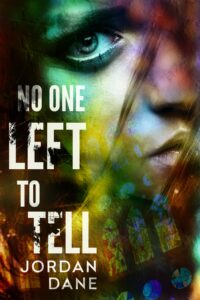
When this blog posts, I will be JET LAGGED from my return trip to Italy. It will be my first full day back home, after a late flight on Wednesday. I hope to be coherent enough to participate with comments, but forgive me if I sleep in. (I will definitely post pictures of my adventure in a later post.)
***
In my last blog post on “Narrative Drive – Do You Have It?” – I focused on creating a page turner novel using Narrative Drive. As important as it may be to write a page turner (no matter what genre), it’s also important to have balance when you’re creating a world for the reader to love. Adding layers of character emotions, clear motives, interesting subplots that reveal morsels for the reader, and enriching the world the author creates can enhance the reader’s experience and give them something memorable.
USING LAYERS TO ENHANCE A SCENE:
This is my primary process of reviewing scenes after I write them. Yes, I look for typos and probably other things my mind is conditioned to look for (ie word repeats, crutch phrases, cliches, adverbs, passive voice, etc.), but below are my broad brush strokes in reviewing for layers.
FIRST EDIT – After I finish with my first pass as a scene, I go back to edit. My initial pass is to delete unnecessary words and tighten the sentence structure. After I get a stripped down version of the scene, I go back to why I wrote the scene in the first place and add on.
QUESTIONS TO ASK – What’s the purpose for the scene? Do I advance the plot by 1 – 3 plot points so that the scene is integral to the plot? Does my character have a journey through the scene from start to finish? How has he or she grown or been changed? Are things revealed that propel the scene forward? Are motives clear for the reader?
EMOTION – Whatever the purpose for the scene (ie to build on fear, or love, or tension or to add a mystery element), I try to add more layers of THAT. Make the fear over the top, for example. Create images to show a deepening love. Darken a feeling of grief. Intensify the action by ratcheting everything up to another level. I tweak things sparingly so I don’t slow the pace with more than I need, but almost every scene can do with a bit more. Use your judgement on how much to add.
GIVE GREATER INSIGHT INTO YOUR CHARACTER – Enhance the voice of your scene by using DEEP POV to show what’s happening inside your character’s head. This could be a display of emotions if your character is prone to swearing or it could be adding a more colorful VOICE of your character as he or she sees the scene unfolding in front of their eyes. Give them an opinion on what they are doing and show who they are to the reader. Review any scene to tweak it for a more colorful character punch.
ACTION – If there is action in the scene, make the character active. Don’t tell what’s happening. Have the character be in the thick of it. Also make sure you write the action in well-placed snippets of movement without overly describing it. That can slow the pace. Sometimes with action, less is more.
SCENE STRUCTURE – Does my scene have structure with a beginning, middle and end? Does my character know more by the end than at the start? is there a journey? Does the scene foreshadow something coming?
USING LAYERS TO STRENGTHEN YOUR PLOT:
In my book EVIL WITHOUT A FACE, I wrote five full plot/subplots that paralleled the main action. My primary protagonist, Jessie the bounty hunter, was the main driver. It was her story to tell. I had her soon-to-be love interest, Payton, be the uncle of a missing girl and showed what he did to find his sister’s only girl. The 3rd character was the missing girl Nikki. I didn’t want her to be a symbolic McGuffin for people to chase. I wanted to show how dark things got for her as she is abducted into an international human trafficking ring. I also had two other minor subplots involving a woman cop in Chicago, friend of Jessie’s and a mystery woman (Alexa) who brought help to Jessie as things escalated on a global scale. These three women would become my version of Charlie’s Angels on Steroids.
All these plots converged in a big scene in the middle of the book where their separate journeys collided in an action-packed scene with explosions and high-octane battles. The dark moment left them all stunned with the girl still missing and presumed dead. Once they started to work together, they found another way to hunt for the missing girl.
The only way all this would work? I had to make each subplot be integral to the main plot. Each character had different story lines and different motives for their involvement, but they were all chasing either the bad guys or the missing girl. Each added to the escalating tension with the time running out. It was a challenge to write, but I learned a lot and pushed my comfort zone.
MAIN PLOT – When you break down any book, there is a primary or main plot, but there can also be various subplots for the reader to enjoy. Life isn’t just one thing going on. Give the reader insight into the world you have drawn them into. The main plot is the core conflict that drives the plot.
SECONDARY PLOT – A secondary plot (subplot) should work parallel with the main plot to add escalating tension, conflict or mystery. This type of subplot should add complications to your main plot.
TERTIARY PLOT – If there is a third level subplot, this can be something of less substance, yet make it something memorable for the reader – something to give special insight into the character of your protagonist or that may titillate a romance. Think of a 3rd level plot as a CHARACTER ARC that adds color and texture. Although the 3rd level subplot may not be as driving as the main plot or secondary plot, it can sometimes capture the imagination of the reader because it’s fun or romantic, or a mystery.
For a 3rd tier plot, I once had my main character pick out the right puppy for a young woman who was a rape survivor. A therapy dog. A very emotional payoff for that subplot. It gave insight into HIS character and the puppy warmed the hearts of readers. It gave hope that the young woman would survive her ordeal.
WEAVE THEM TOGETHER? – If you are daring, make these 3 levels of plots work together, where the main plot drives the action, the secondary plot can be a plot device to escalate the consequences and shorten the timing of the main plot, and the 3rd plot can reveal the protagonist’s traits as things escalate.
Do they have time to find a puppy while they are saving the world? Do their internal conflicts and weaknesses add tension as the plot shifts (ie suicidal tendencies, aggravated illness, debilitating fears, temperament issues, or romantic involvements)? Test your character by abusing their weaknesses or personal conflicts. How do they deal with it? How does that struggle manifest throughout the main plot development?
Summary – I’ve often thought of layering as it pertains to one scene at a time, but when I researched this topic, I found layering can apply to plots. As I thought of my own writing, on how I devise subplots, I realized layering impacts the overall structure and makes the book more cohesive. Even themes can be enhanced with scenes and subplots that are woven into a story in a subtle way.
DISCUSSION:
Share your thoughts on your current WIP and the levels of plot/subplot you are using. What choices did you make on the structure of your story? (Even if you are a “pantser,” you should have a feel for this.)

















